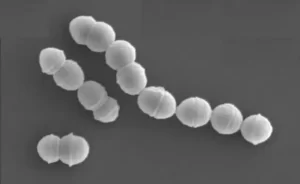Japan Nuclear Wastewater Reaches West Coast of North Pacific in 1200 Days!
- Child Products from Aliexpess and Temu Contain Carcinogens 3026x Over Limit
- Daiichi Sankyo/AstraZeneca’s Enhertu Shows Positive Results in Phase III DESTINY-Breast06 Clinical Trial
- Mn007 Molecules Offer Potential for Combating Streptococcus pyogenes Infection
- Popular Indian Spices Banned in Hong Kong Over Carcinogen Concerns
- AstraZeneca Admits for the First Time that its COVID Vaccine Has Blood Clot Side Effects
- Gut Bacteria Enzymes Offer Hope for ABO Universal Blood Transfusions
Japan Nuclear Wastewater Reaches West Coast of North Pacific in 1200 Days!
- AstraZeneca Admits for the First Time that its COVID Vaccine Has Blood Clot Side Effects
- Was COVID virus leaked from the Chinese WIV lab?
- HIV Cure Research: New Study Links Viral DNA Levels to Spontaneous Control
- FDA has mandated a top-level black box warning for all marketed CAR-T therapies
- Can people with high blood pressure eat peanuts?
- What is the difference between dopamine and dobutamine?
- How long can the patient live after heart stent surgery?
Japan Initiates Discharge of Nuclear Wastewater: Japan Nuclear Wastewater Reaches West Coast of North Pacific in 1200 Days!
At this very moment, people across the globe are closely monitoring Japan’s every move, as the country commences its plan to release nuclear wastewater into the ocean today at 1 PM local time.
This event is just a few hours away, and once the discharge begins, it poses a catastrophic threat to humanity and countless marine species.
According to the decisions made during a cabinet meeting held by the Japanese government on August 22, Japan intends to officially start discharging nuclear wastewater into the ocean on August 24 at 1 PM.
The daily discharge is planned to be a maximum of 500,000 liters (approximately 500 metric tons), with an initial release of 7,800 metric tons.
The goal is to discharge a total of 31,200 metric tons by the end of the fiscal year 2023 and gradually release all 1.23 million metric tons stored in tanks over the next 30 years.
To put this into perspective, 1.23 million metric tons would fill 500 Olympic-sized swimming pools.
It is evident that to achieve this goal within 30 years, the annual discharge rate will only increase, never decrease.

What kind of disasters can we expect from such a vast amount of nuclear wastewater?
European researchers have concluded that 57 days after the discharge begins, radioactive materials will spread across a significant portion of the Pacific Ocean. Researchers at Tsinghua University predicted in 2021 through modeling analysis that within 240 days (7 months) of the discharge, the contamination could reach China’s coastal areas, and within 1200 days, it could cover the North Pacific.
Subsequently, the nuclear wastewater will travel along the coast of North America, simultaneously moving towards the Indian Ocean through the northern waters of Australia.
Scientists believe that due to ocean currents, by the 2400th day (approximately 6 years and 6 months), pollution levels on the west coast of North America will reach alarming levels, while the coastal areas of China will experience lower to moderate contamination.
A decrease in concentration does not imply the disappearance of pollutants. Some isotopes have decay processes that take tens of thousands or even hundreds of thousands of years, potentially leading to human extinction and catastrophic harm to the Earth.

Tokyo Electric Power Company (TEPCO), the operator of the Fukushima Daiichi Nuclear Power Plant, has attempted to defend its actions by claiming that the nuclear wastewater has been treated and will be diluted at a ratio of 1:1200 (1 ton of wastewater to 1200 tons of water).
However, regardless of the concentration levels in different sea areas and Japan’s dilution efforts, the fact remains that nuclear contaminants are highly radioactive and pose a severe threat to the entire global ecosystem.
Once Pandora’s box is opened, up to 65 different radioactive elements in the wastewater will swiftly contaminate the oceans, making activities like swimming, enjoying the seascape, and savoring seafood luxuries of the past.
Among these 65 elements, tritium is perhaps the most well-known. It is a carcinogenic and teratogenic substance, and despite its weak radioactivity, it can easily enter the human body through the skin, respiratory system, or digestive tract. Tritium can also become part of various organic molecules through metabolism.
With a physical half-life of approximately 12.33 years, it takes over 12 years for half of the tritium to transform into stable elements.
Long-term exposure to tritium in the body can lead to symptoms such as fatigue, drowsiness, loss of appetite, nausea, and upper abdominal pain.
Accumulated over a certain dose, it can result in chronic radiation sickness and even cancer.
To downplay residents’ fears of tritium, the Japanese government has even created a whimsical mascot for this hazardous substance.
In addition to tritium, other elements like Carbon-14, Iodine-129, and Strontium-90 can cause even more severe harm than Tritium.
Nuclear contaminated water: Japanese government paid bribes and corrected the IAEA report
How serious is the harm of Fukushima Nuclear Sewage ?
Fukushima nuclear sewage will arrive in U.S. in 3 years?
Japan Nuclear Wastewater Reaches West Coast of North Pacific in 1200 Days!
(source:internet, reference only)
Disclaimer of medicaltrend.org
Important Note: The information provided is for informational purposes only and should not be considered as medical advice.



